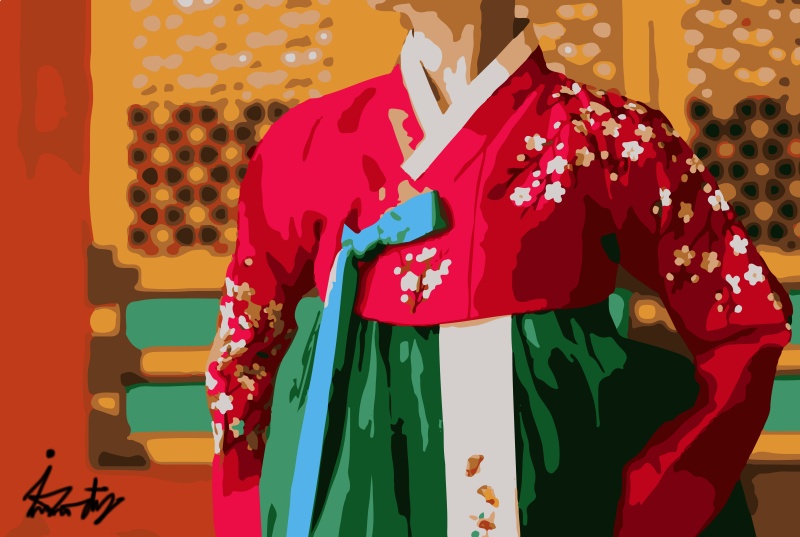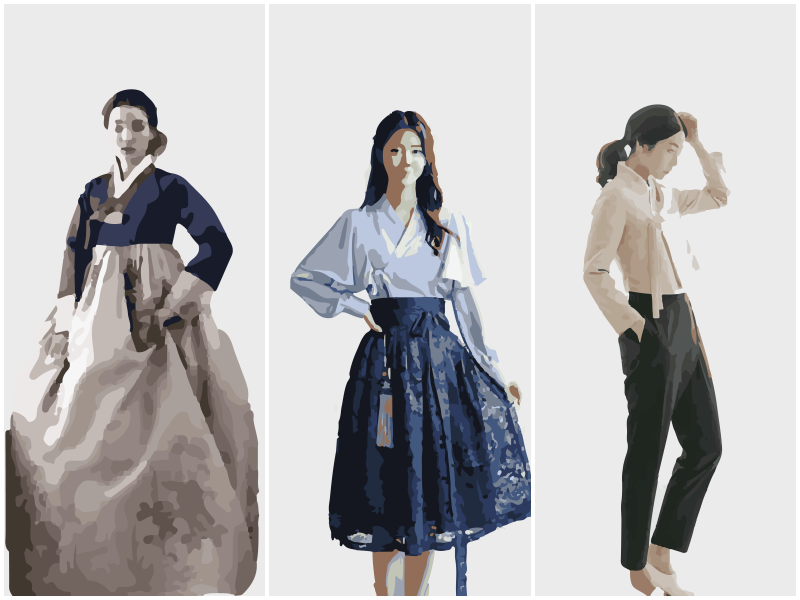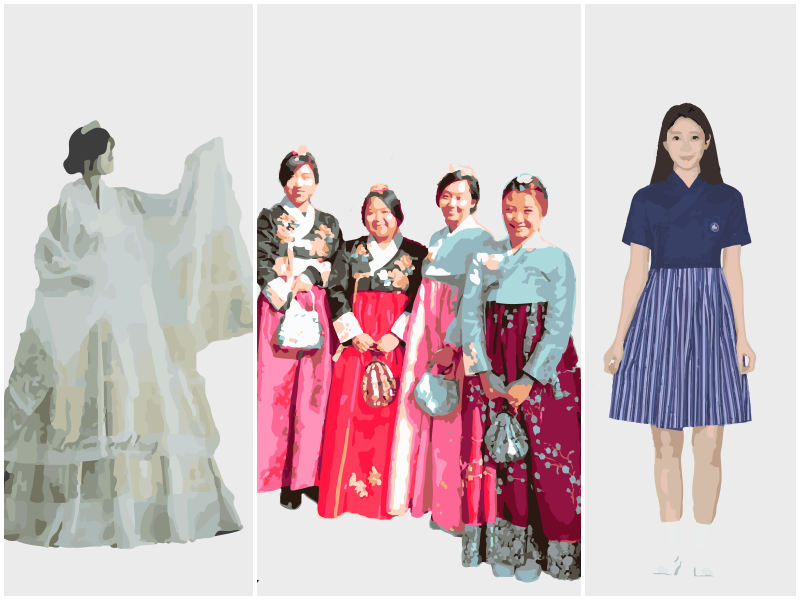- 한국어
- English
- 日本語
- 中文
- العربية
- Español
- Français
- Deutsch
- Pусский
- Tiếng Việt
- Indonesian
By Honorary Reporter Minnath Azeez from Sri Lanka and Iran Tavera from Mexico
Photo = Iran Tavera

Hanbok continues to wow people not just in Korea but around the world (Iran Tavera)
A traditional Hanbok generally consists of two main pieces: the upper garment jeogori and the bottom one called chima (skirt) for women and baji (pants) for men. A woman's Hanbok also includes a ribbon (goreum) used to fasten the top.
Over Korea's long history, Hanbok designs have undergone many changes. Today, they look more modernized and incorporate Western fashion to appeal to the younger generation while staying true to Hanbok's roots. Modern Hanbok is more functional and has grown more in recent years.
The following are six types of Hanbok usable in the modern era.

From the left are a Joseon traditional, casual and work Hanbok (Iran Tavera)
Traditional Joseon style
The traditional Hanbok of the Joseon Dynasty (1392-1910) was inspired by the preceding Goryeo Dynasty. Goryeo designs were inspired by Mongolian fashion with longer tops and bottoms. In the Joseon era, however, Hanbok received a more modern look with a shorter and tighter jeogori. In the mid-Joseon period, the upper garment's length reached just above the waist. Toward the late 19th century, the jeogori was further shortened and reached up to the chest, and an additional sash was wrapped around the chest.
Casual
Casual Hanbok is a modern take on the traditional style, incorporating floral patterns, lace and even the female ornamental accessory norigae. Unlike traditional Hanbok, the casual ones feature shorter skirts like in most modern Hanbok, being lighter and less layered. They can be worn daily or as casual wear.
Work
Hanbok outfits designed for office wear feature a one-piece dress, a two-piece outfit with a short skirt or one with pants for convenience. Despite different designs, they all have a jeogori.

Shown here are bridal (left), rental (center) and uniform Hanbok (Iran Tavera)
Bridal
This Hanbok typically has intricate artwork and patterns that represent wishes for a happy marriage, family life and childbearing. It is usually red with many traditional accessories. At a modern wedding, however, the mothers of the bride and groom are usually wearing Hanbok while the bride is typically dressed in a Western wedding gown. To keep the Hanbok tradition alive and satisfy those seeking a unique bridal outfit, modern bridal Hanbok sports a combination of Eastern and Western designs. Bridal Hanbok is similar to a Western wedding dress and represents the bride's femininity with a white color, along with delicate stone and beadwork, lace and sometimes an attached bridal train.
Rental
This type is offered at many tourist locations in Seoul, especially in the Insa-dong neighborhood, and usually featuring bright golden patterns, embroidered flowers and numerous designs.
For a deposit ranging from KRW 13,000-50,000, one can dress up as a Korean queen by choosing a royal Hanbok or a simpler design worn by a Korean woman in the past. People wearing Hanbok can enter free the Seoul palaces of Gyeongbokgung and Changdeokgung. The nearby Bukchon Hanok Village is also great for taking pictures and seeing many Hanbok-clad tourists going around the capital.
Uniform
As part of a government project, modern school uniforms inspired by Hanbok were introduced in October this year for middle and high school students in winter, summer and activewear versions. These clothes were designed to be comfortable enough to be worn daily and for a long time. Each version has a jeogori and a flowy skirt incorporating the iconic fit and fold of a chima. But unlike that of traditional Hanbok, the skirt is shorter or can come in the form of a dress.
enny0611@korea.kr
*This article is written by a Korea.net Honorary Reporter. Our group of Honorary Reporters are from all around the world, and they share with Korea.net their love and passion for all things Korean.